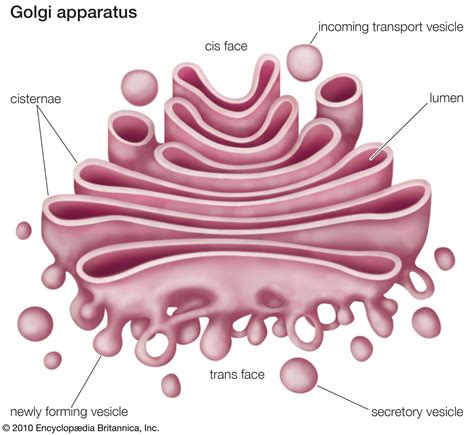Prokaryotes, the oldest and most abundant organisms on Earth, are fundamentally different from their eukaryotic counterparts in terms of their cellular structure and organization. One of the key distinguishing features between prokaryotes and eukaryotes is the presence or absence of membrane-bound organelles, such as the Golgi apparatus.

The Golgi Apparatus: A Key Organelle in Eukaryotic Cells
The Golgi apparatus, also known as the Golgi complex or Golgi body, is a vital organelle found in eukaryotic cells. It is responsible for a wide range of cellular functions, including the processing, modification, sorting, and distribution of proteins and lipids. The Golgi apparatus consists of a series of flattened, stacked membranes called cisternae. Proteins and lipids are transported to the Golgi apparatus from the endoplasmic reticulum (ER), where they undergo further processing.
The Absence of the Golgi Apparatus in Prokaryotes
Unlike eukaryotic cells, prokaryotes lack a membrane-bound Golgi apparatus. Instead, prokaryotes have specialized regions of the plasma membrane that perform similar functions to the Golgi apparatus, such as the processing and secretion of proteins. These regions are called the cytoplasmic membrane vesicles (CMVs).
CMVs: The Prokaryotic Golgi Equivalents
CMVs are small, membrane-bound vesicles that bud off from the plasma membrane. They contain proteins that are responsible for the processing and secretion of proteins. The proteins in the CMVs are similar to those found in the Golgi apparatus of eukaryotic cells, including enzymes that glycosylate and phosphorylate proteins.
The Evolution of the Golgi Apparatus
The Golgi apparatus is believed to have evolved from the plasma membrane of prokaryotic cells. As cells became more complex and specialized, the Golgi apparatus emerged as a dedicated organelle responsible for the processing and secretion of proteins and lipids.
Additional Key Differences Between Prokaryotes and Eukaryotes
In addition to the absence of the Golgi apparatus, prokaryotes also lack other membrane-bound organelles found in eukaryotic cells, such as:
- Mitochondria
- Chloroplasts
- Nucleus
Prokaryotes also have a simpler cellular structure than eukaryotes. They do not have a nuclear envelope or a cytoskeleton.
Key Points to Remember:
- Prokaryotes do not have a Golgi apparatus.
- Prokaryotes have specialized regions of the plasma membrane called CMVs that perform similar functions to the Golgi apparatus.
- CMVs contain proteins that are responsible for the processing and secretion of proteins.
- The Golgi apparatus is believed to have evolved from the plasma membrane of prokaryotic cells.
Additional Resources:
- The Golgi Apparatus: Structure and Function
- Prokaryotic Cells: Structure and Function
- The Evolution of the Golgi Apparatus
